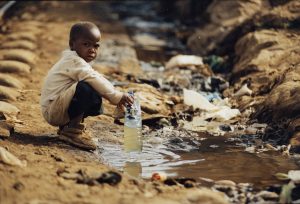
The Sustainable Development Goals cover a myriad of areas including ending poverty and hunger, taking action on climate change and reducing inequality. Number 6 of the 17 Sustainable Development Goals is “Clean Water and Sanitation: Ensure access to water and sanitation for all”. Ultimately, this goal argues that humans require clean, accessible water to live, and while there is sufficient, clean water around the world, this often does not reach those who need it most due to poor infrastructure and bad economics. However in recent years sufficient availability of drinking water around the world to achieve clean, accessible water for all has been put in doubt, with a pending water crisis expected to unfold.
In 2015, NASA’s Gravity Recovery and Climate Experiment (GRACE) satellites were utilised to assess the state of the world’s 37 groundwater basins. The studies, conducted by the University of California, showed that approximately one third of the largest groundwater basins on Earth are rapidly depleting, and this is due to human consumption. To make matters worse, climate change and a growing world population are only expected to exacerbate the problem.
While the studies conducted by the University of California stated that one-third of the world’s largest groundwater basins are under stress, it must be noted that the amount of water actually remaining in these basins is unknown. Therefore there may only be enough water remaining to last a few decades, or there may be enough for millennia of consumption.
Regardless, the affects of water shortages can be seen around the world. One of the more publicised water shortages is that of Komik, the world’s highest village. Komik is in the Spiti Valley of India and sits at over 4,500m above sea level. Komik is receiving less and less rainfall each year, and with the annual average temperature has risen 0.5 degrees Celsius, matters are only getting worse. This is a common story across India, with 50% of the county’s water wells decreasing in volume over the past decade. India’s water issues are only worsened by the fact that approximately 80% of the country’s lakes, rivers and streams have been polluted with litter and human waste. Likewise, 80% of the rivers in China are too toxic for fish to survive, meaning human consumption is generally out of the question.